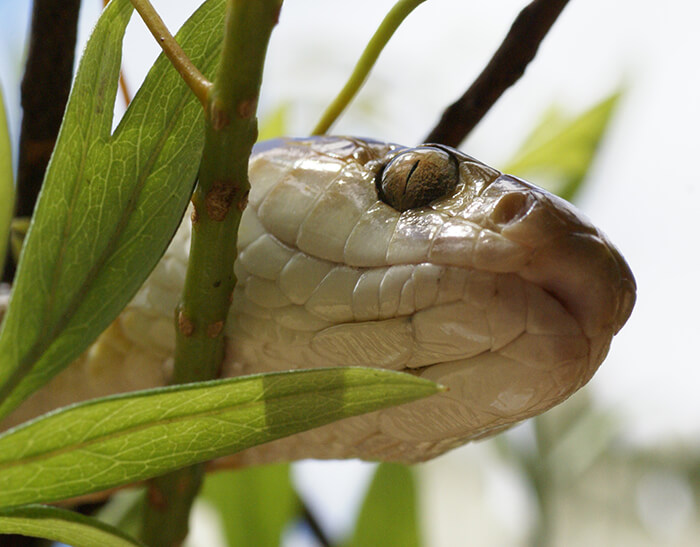Introduction
Tiger snakes are amongst the most well-known and feared reptiles in Australia, widely acknowledged for their striking look and potent poison. This post intends to delve into the complexities of the tiger snake's environment, distribution, behavior, and what one can anticipate when experiencing these interesting animals. By understanding where to discover them and exactly how to navigate prospective risks, you can appreciate their function in the ecosystem while guaranteeing your safety.
Tiger Serpent Environment: Where to Locate Them and What to Expect
Tiger serpents are predominantly located in southeastern Australia, consisting of Tasmania, where they grow in a selection of environments. Their versatility permits them to inhabit varied terrains such as coastal regions, wetlands, grasslands, and also metropolitan areas.
Geographical Distribution of Tiger Snakes
The geographical reach of tiger snakes expands throughout numerous Australian states. They are especially usual in:
- Tasmania: The Tasmanian tiger serpent is among the most recognized subspecies. Victoria: Discovered near water bodies like rivers and lakes. New South Wales: Preferring bushland areas close to water sources. Western Australia: More commonly seen around swamps and estuaries.
Understanding the geographical distribution is crucial for both conservation efforts and public recognition relating to experiences with these snakes.
Preferred Environments of Tiger Snakes
Tiger serpents prosper in various environments. Below are some common atmospheres where they may be located:

Behavioral Patterns Related to Habitat
Understanding tiger snake habits within their environments is essential for communication management:

- Nocturnal Activity: Tiger serpents often tend to be a lot more active during golden hours (sundown and dawn), making them more challenging to find throughout daytime. Territorial Nature: They exhibit territorial actions; thus, it's critical to appreciate their room if encountered.
This understanding can aid minimize undesirable interactions between people and tiger snakes.
Are Tiger Snakes Venomous?
Yes, tiger serpents are without a doubt poisonous. Their venom includes neurotoxins that can cause paralysis and even death if untreated.
What Makes Their Venom Dangerous?
The strength of a tiger snake's poison varies depending on numerous variables:
- Geographic location Individual health Quantity injected throughout a bite
Symptoms of a Tiger Serpent Bite
Recognizing signs early is essential:
- Pain at the bite site Swelling Difficulty breathing
Immediate clinical attention is vital if bitten.
First Help for Serpent Bites
Knowing first aid treatments can be lifesaving in instance of a snake bite.
First Aid Steps for Serpent Bites
Stay calmness; maintain the affected area still. Call emergency situation solutions immediately. Apply a stress plaster above the bite site. Keep the individual lying down until help arrives.Following these actions can substantially enhance results adhering to a snake encounter.
Where Else Can You Come Across Tiger Snakes?
While Australian snake distribution they're typically discovered in their natural environments, urbanization has led to enhanced experiences with humans.
Urban Encounters
Tiger serpents may venture into gardens or parks looking for food or water sources.
Precautions When Hiking or Exploring
When exploring locations known for tiger snake habitats:
- Wear thick boots Stay on paths Be vigilant
Taking these precautions will certainly help lessen threats while you take pleasure in nature.

Baby Tiger Snakes: A Special Viewpoint on Growth
Just like adults, baby tiger serpents are born poisonous however smaller in dimension.
Characteristics of Baby Tiger Snakes
- Size: Usually around 20-- 30 cm when born. Appearance: Sporting activity comparable coloration as grownups but may have lighter bands initially.
Understanding their development aids in valuing their eco-friendly function from infancy onward.
FAQs concerning Tiger Snakes
1. Are all tiger snakes venomous?
Yes, all species of tiger snakes possess poison https://www.storeboard.com/blogs/arts/your-go-to-guide-for-snake-bite-first-aid-kits/5918334 with the ability of creating major harm.
2. Just how can I determine a tiger snake?
Look for unique banding patterns varying from yellowish-brown to blackish colors along their bodies; adults generally expand between 1-- 2 meters long.
3. What need to I do if attacked by a tiger snake?
Seek immediate clinical focus; use first aid steps as discussed earlier while maintaining calm.
4. Do baby tiger serpents pose any kind of danger?
Absolutely! Despite their little dimension, baby tiger snakes are still poisonous and can provide bites that call for major medical attention.
5. Exist any particular habitats I should avoid?
Avoid going through thick underbrush or near stationary water where conditions favor snake existence during warmer months.
6. How do preservation initiatives influence tiger serpent populations?
Conservation efforts focus on habitat preservation which straight impacts populace Venom extraction and antivenom production in Australia stability by making certain sufficient food sources and risk-free reproduction locations.
Conclusion
In recap, comprehending "Tiger Serpent Environment: Where to Find Them and What to Expect" not just enriches our expertise about these exceptional reptiles but likewise enhances our capability to exist side-by-side securely with them in shared settings. From recognizing their chosen environments to understanding how to respond successfully if bitten, extensive knowledge empowers us all-- whether we're wild animals lovers or laid-back hikers-- to value this fascinating aspect of Australia's all-natural heritage while prioritizing our safety.
This short article serves as a comprehensive guide on everything pertaining to tiger serpent habitats! Whether you're an enthusiastic explorer or a person looking just for details concerning these animals, recognizing exactly how they communicate within their communities-- and exactly how we fit into that image-- is crucial!